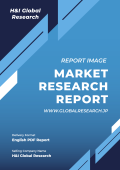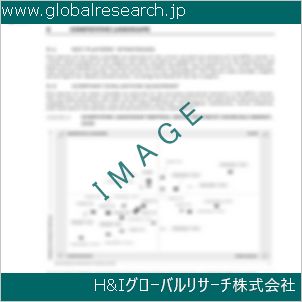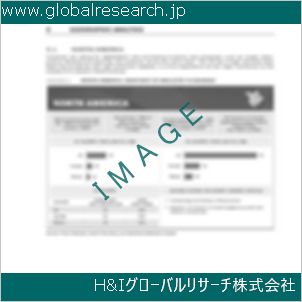1 Phytohemagglutinin Market Overview
1.1 Product Overview and Scope of Phytohemagglutinin
1.2 Phytohemagglutinin Segment by Type
1.2.1 Global Phytohemagglutinin Market Value Comparison by Type (2023-2029)
1.2.2 Leukocyte Reactive (L)
1.2.3 Erythrocyte Reactive (E)
1.3 Phytohemagglutinin Segment by Application
1.3.1 Global Phytohemagglutinin Market Value by Application: (2023-2029)
1.3.2 Scientific Research
1.3.3 Industrial Production
1.4 Global Phytohemagglutinin Market Size Estimates and Forecasts
1.4.1 Global Phytohemagglutinin Revenue 2018-2029
1.4.2 Global Phytohemagglutinin Sales 2018-2029
1.4.3 Global Phytohemagglutinin Market Average Price (2018-2029)
1.5 Assumptions and Limitations
2 Phytohemagglutinin Market Competition by Manufacturers
2.1 Global Phytohemagglutinin Sales Market Share by Manufacturers (2018-2023)
2.2 Global Phytohemagglutinin Revenue Market Share by Manufacturers (2018-2023)
2.3 Global Phytohemagglutinin Average Price by Manufacturers (2018-2023)
2.4 Global Phytohemagglutinin Industry Ranking 2021 VS 2022 VS 2023
2.5 Global Key Manufacturers of Phytohemagglutinin, Manufacturing Sites & Headquarters
2.6 Global Key Manufacturers of Phytohemagglutinin, Product Type & Application
2.7 Phytohemagglutinin Market Competitive Situation and Trends
2.7.1 Phytohemagglutinin Market Concentration Rate
2.7.2 The Global Top 5 and Top 10 Largest Phytohemagglutinin Players Market Share by Revenue
2.7.3 Global Phytohemagglutinin Market Share by Company Type (Tier 1, Tier 2 and Tier 3)
2.8 Manufacturers Mergers & Acquisitions, Expansion Plans
3 Phytohemagglutinin Retrospective Market Scenario by Region
3.1 Global Phytohemagglutinin Market Size by Region: 2018 Versus 2022 Versus 2029
3.2 Global Phytohemagglutinin Global Phytohemagglutinin Sales by Region: 2018-2029
3.2.1 Global Phytohemagglutinin Sales by Region: 2018-2023
3.2.2 Global Phytohemagglutinin Sales by Region: 2024-2029
3.3 Global Phytohemagglutinin Global Phytohemagglutinin Revenue by Region: 2018-2029
3.3.1 Global Phytohemagglutinin Revenue by Region: 2018-2023
3.3.2 Global Phytohemagglutinin Revenue by Region: 2024-2029
3.4 North America Phytohemagglutinin Market Facts & Figures by Country
3.4.1 North America Phytohemagglutinin Market Size by Country: 2018 VS 2022 VS 2029
3.4.2 North America Phytohemagglutinin Sales by Country (2018-2029)
3.4.3 North America Phytohemagglutinin Revenue by Country (2018-2029)
3.4.4 United States
3.4.5 Canada
3.5 Europe Phytohemagglutinin Market Facts & Figures by Country
3.5.1 Europe Phytohemagglutinin Market Size by Country: 2018 VS 2022 VS 2029
3.5.2 Europe Phytohemagglutinin Sales by Country (2018-2029)
3.5.3 Europe Phytohemagglutinin Revenue by Country (2018-2029)
3.5.4 Germany
3.5.5 France
3.5.6 U.K.
3.5.7 Italy
3.5.8 Russia
3.6 Asia Pacific Phytohemagglutinin Market Facts & Figures by Country
3.6.1 Asia Pacific Phytohemagglutinin Market Size by Country: 2018 VS 2022 VS 2029
3.6.2 Asia Pacific Phytohemagglutinin Sales by Country (2018-2029)
3.6.3 Asia Pacific Phytohemagglutinin Revenue by Country (2018-2029)
3.6.4 China
3.6.5 Japan
3.6.6 South Korea
3.6.7 India
3.6.8 Australia
3.6.9 China Taiwan
3.6.10 Indonesia
3.6.11 Thailand
3.6.12 Malaysia
3.7 Latin America Phytohemagglutinin Market Facts & Figures by Country
3.7.1 Latin America Phytohemagglutinin Market Size by Country: 2018 VS 2022 VS 2029
3.7.2 Latin America Phytohemagglutinin Sales by Country (2018-2029)
3.7.3 Latin America Phytohemagglutinin Revenue by Country (2018-2029)
3.7.4 Mexico
3.7.5 Brazil
3.7.6 Argentina
3.8 Middle East and Africa Phytohemagglutinin Market Facts & Figures by Country
3.8.1 Middle East and Africa Phytohemagglutinin Market Size by Country: 2018 VS 2022 VS 2029
3.8.2 Middle East and Africa Phytohemagglutinin Sales by Country (2018-2029)
3.8.3 Middle East and Africa Phytohemagglutinin Revenue by Country (2018-2029)
3.8.4 Turkey
3.8.5 Saudi Arabia
3.8.6 UAE
4 Segment by Type
4.1 Global Phytohemagglutinin Sales by Type (2018-2029)
4.1.1 Global Phytohemagglutinin Sales by Type (2018-2023)
4.1.2 Global Phytohemagglutinin Sales by Type (2024-2029)
4.1.3 Global Phytohemagglutinin Sales Market Share by Type (2018-2029)
4.2 Global Phytohemagglutinin Revenue by Type (2018-2029)
4.2.1 Global Phytohemagglutinin Revenue by Type (2018-2023)
4.2.2 Global Phytohemagglutinin Revenue by Type (2024-2029)
4.2.3 Global Phytohemagglutinin Revenue Market Share by Type (2018-2029)
4.3 Global Phytohemagglutinin Price by Type (2018-2029)
5 Segment by Application
5.1 Global Phytohemagglutinin Sales by Application (2018-2029)
5.1.1 Global Phytohemagglutinin Sales by Application (2018-2023)
5.1.2 Global Phytohemagglutinin Sales by Application (2024-2029)
5.1.3 Global Phytohemagglutinin Sales Market Share by Application (2018-2029)
5.2 Global Phytohemagglutinin Revenue by Application (2018-2029)
5.2.1 Global Phytohemagglutinin Revenue by Application (2018-2023)
5.2.2 Global Phytohemagglutinin Revenue by Application (2024-2029)
5.2.3 Global Phytohemagglutinin Revenue Market Share by Application (2018-2029)
5.3 Global Phytohemagglutinin Price by Application (2018-2029)
6 Key Companies Profiled
6.1 Biowest
6.1.1 Biowest Corporation Information
6.1.2 Biowest Description and Business Overview
6.1.3 Biowest Phytohemagglutinin Sales, Revenue and Gross Margin (2018-2023)
6.1.4 Biowest Phytohemagglutinin Product Portfolio
6.1.5 Biowest Recent Developments/Updates
6.2 Thermo Fisher
6.2.1 Thermo Fisher Corporation Information
6.2.2 Thermo Fisher Description and Business Overview
6.2.3 Thermo Fisher Phytohemagglutinin Sales, Revenue and Gross Margin (2018-2023)
6.2.4 Thermo Fisher Phytohemagglutinin Product Portfolio
6.2.5 Thermo Fisher Recent Developments/Updates
6.3 Biological Industries
6.3.1 Biological Industries Corporation Information
6.3.2 Biological Industries Description and Business Overview
6.3.3 Biological Industries Phytohemagglutinin Sales, Revenue and Gross Margin (2018-2023)
6.3.4 Biological Industries Phytohemagglutinin Product Portfolio
6.3.5 Biological Industries Recent Developments/Updates
6.4 VWR
6.4.1 VWR Corporation Information
6.4.2 VWR Description and Business Overview
6.4.3 VWR Phytohemagglutinin Sales, Revenue and Gross Margin (2018-2023)
6.4.4 VWR Phytohemagglutinin Product Portfolio
6.4.5 VWR Recent Developments/Updates
6.5 Francelab
6.5.1 Francelab Corporation Information
6.5.2 Francelab Description and Business Overview
6.5.3 Francelab Phytohemagglutinin Sales, Revenue and Gross Margin (2018-2023)
6.5.4 Francelab Phytohemagglutinin Product Portfolio
6.5.5 Francelab Recent Developments/Updates
6.6 Jain Biologicals
6.6.1 Jain Biologicals Corporation Information
6.6.2 Jain Biologicals Description and Business Overview
6.6.3 Jain Biologicals Phytohemagglutinin Sales, Revenue and Gross Margin (2018-2023)
6.6.4 Jain Biologicals Phytohemagglutinin Product Portfolio
6.6.5 Jain Biologicals Recent Developments/Updates
6.7 R&D Systems
6.6.1 R&D Systems Corporation Information
6.6.2 R&D Systems Description and Business Overview
6.6.3 R&D Systems Phytohemagglutinin Sales, Revenue and Gross Margin (2018-2023)
6.4.4 R&D Systems Phytohemagglutinin Product Portfolio
6.7.5 R&D Systems Recent Developments/Updates
6.8 Serox GmbH
6.8.1 Serox GmbH Corporation Information
6.8.2 Serox GmbH Description and Business Overview
6.8.3 Serox GmbH Phytohemagglutinin Sales, Revenue and Gross Margin (2018-2023)
6.8.4 Serox GmbH Phytohemagglutinin Product Portfolio
6.8.5 Serox GmbH Recent Developments/Updates
6.9 Irvine Scientific
6.9.1 Irvine Scientific Corporation Information
6.9.2 Irvine Scientific Description and Business Overview
6.9.3 Irvine Scientific Phytohemagglutinin Sales, Revenue and Gross Margin (2018-2023)
6.9.4 Irvine Scientific Phytohemagglutinin Product Portfolio
6.9.5 Irvine Scientific Recent Developments/Updates
6.10 Cellseco
6.10.1 Cellseco Corporation Information
6.10.2 Cellseco Description and Business Overview
6.10.3 Cellseco Phytohemagglutinin Sales, Revenue and Gross Margin (2018-2023)
6.10.4 Cellseco Phytohemagglutinin Product Portfolio
6.10.5 Cellseco Recent Developments/Updates
6.11 Cytiva
6.11.1 Cytiva Corporation Information
6.11.2 Cytiva Phytohemagglutinin Description and Business Overview
6.11.3 Cytiva Phytohemagglutinin Sales, Revenue and Gross Margin (2018-2023)
6.11.4 Cytiva Phytohemagglutinin Product Portfolio
6.11.5 Cytiva Recent Developments/Updates
7 Industry Chain and Sales Channels Analysis
7.1 Phytohemagglutinin Industry Chain Analysis
7.2 Phytohemagglutinin Key Raw Materials
7.2.1 Key Raw Materials
7.2.2 Raw Materials Key Suppliers
7.3 Phytohemagglutinin Production Mode & Process
7.4 Phytohemagglutinin Sales and Marketing
7.4.1 Phytohemagglutinin Sales Channels
7.4.2 Phytohemagglutinin Distributors
7.5 Phytohemagglutinin Customers
8 Phytohemagglutinin Market Dynamics
8.1 Phytohemagglutinin Industry Trends
8.2 Phytohemagglutinin Market Drivers
8.3 Phytohemagglutinin Market Challenges
8.4 Phytohemagglutinin Market Restraints
9 Research Finding and Conclusion
10 Methodology and Data Source
10.1 Methodology/Research Approach
10.1.1 Research Programs/Design
10.1.2 Market Size Estimation
10.1.3 Market Breakdown and Data Triangulation
10.2 Data Source
10.2.1 Secondary Sources
10.2.2 Primary Sources
10.3 Author List
10.4 Disclaimer
| ※参考情報 フィトヘマグルチニン(Phytohemagglutinin、PHA)は、植物由来のタンパク質で、特に赤インゲン豆(Phaseolus vulgaris)から最初に分離されました。PHAは、その特異な性質と生物学的活性から、科学研究や医療において重要な役割を果たしています。以下に、フィトヘマグルチニンの概念について詳しく解説いたします。 まず、フィトヘマグルチニンの定義について触れます。PHAは、主に植物に由来するアグルチニンの一種であり、特に糖鎖と結合することで細胞を凝集させる特性を持っています。これは、PHAが細胞膜上の糖鎖と相互作用することにより、細胞同士を結びつける作用があるためです。このため、PHAは細胞生物学や免疫学の研究で、細胞の凝集や成熟に関与する重要な役割を果たしています。 次に、フィトヘマグルチニンの特徴について説明します。PHAは、特にその強力なアグルチニン作用が特徴的です。これは、PHAが赤血球や他の細胞の表面に存在する特定の糖鎖に結合する能力を有するため、細胞同士を結合させることができます。PHAは多くの細胞タイプに対して作用するため、細胞の増殖や分化、免疫応答の研究に広く用いられています。さらに、PHAは免疫系の働きを活性化し、T細胞やB細胞の増殖を促進するといった特徴も持ち合わせています。 フィトヘマグルチニンにはいくつかの種類がありますが、特に代表的なのはレクチンと呼ばれるグループに属するものです。PHAの主な種類には、長鎖型(L型)と短鎖型(S型)があります。L型フィトヘマグルチニンは、細胞の凝集能力が高く、強力な免疫刺激因子として知られています。一方で、S型はL型に比べて凝集作用が弱いですが、特定の研究目的に適した活性を持つこともあります。これらのバリエーションがあるため、研究者は目的に応じて適切な種類を選択して使用することが可能です。 フィトヘマグルチニンの用途については、その多岐にわたる応用が挙げられます。まず、細胞培養においてPHAは、リンパ球などの免疫細胞を刺激し、細胞の増殖を促すために利用されます。これにより、癌免疫療法やワクチン開発の研究において重要な役割を果たしています。また、PHAを使った実験では、細胞凝集能を測定することで、細胞の機能や成熟度を評価することができます。 さらに、PHAは生化学的な研究においても重要なツールとして活用されています。たとえば、糖鎖の分析や構造解析に用いられるほか、特定の糖鎖を持つ細胞を選択的に標識するための手段としても利用されます。これにより、細胞間の相互作用やシグナル伝達のメカニズムを解明するための研究が進められています。 また、病理学の分野でもPHAの応用が見られます。がん研究においては、腫瘍細胞の特定の糖鎖の発現を解析するためにPHAが使用され、腫瘍の特性を理解する手助けとなります。特に、PHAががん細胞の増殖を促す性質を持つことから、細胞の応答メカニズムを解析するための重要な因子とされています。 最近では、PHAを利用したバイオテクノロジー分野での応用が拡大しています。植物由来のレクチンは、食品業界や農業においても応用され、食物の保存性を高めるための技術や病害抵抗性の向上に寄与しています。また、PHAを利用した薬剤の開発も進められ、疾患治療における新たな道が切り拓かれています。 フィトヘマグルチニンと関連する技術としては、細胞培養技術や分子生物学的手法、さらにはゲノム編集技術が挙げられます。特に、PHAに関連した細胞刺激技術は、近年の免疫療法や再生医療の進展にも寄与しています。これにより、患者の自身の細胞を用いた治療法や、細胞を活性化させる新たな治療手段の開発が進められています。 最後に、フィトヘマグルチニンはその多様な特性と応用により、基礎研究から応用研究まで幅広い領域で利用される重要な物質であると言えます。今後もPHAを用いた新たな発見が期待されており、生命科学や医学における革新的な進展に寄与することが期待されます。このようにフィトヘマグルチニンは、さまざまな分野での研究や応用において重要な役割を果たし続けているのです。 |
❖ 免責事項 ❖
http://www.globalresearch.jp/disclaimer












